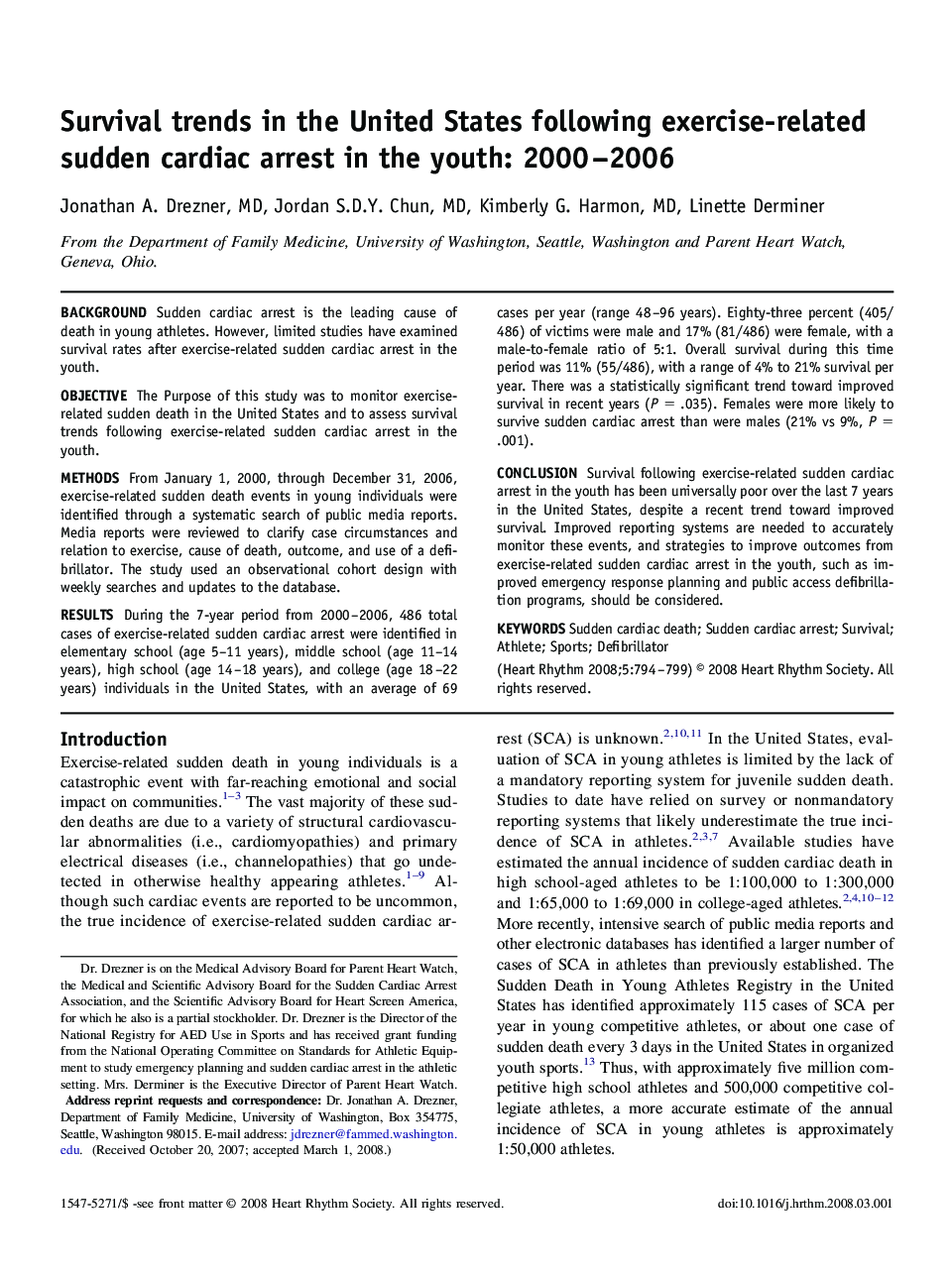| Article ID | Journal | Published Year | Pages | File Type |
|---|---|---|---|---|
| 2925294 | Heart Rhythm | 2008 | 6 Pages |
BackgroundSudden cardiac arrest is the leading cause of death in young athletes. However, limited studies have examined survival rates after exercise-related sudden cardiac arrest in the youth.ObjectiveThe Purpose of this study was to monitor exercise-related sudden death in the United States and to assess survival trends following exercise-related sudden cardiac arrest in the youth.MethodsFrom January 1, 2000, through December 31, 2006, exercise-related sudden death events in young individuals were identified through a systematic search of public media reports. Media reports were reviewed to clarify case circumstances and relation to exercise, cause of death, outcome, and use of a defibrillator. The study used an observational cohort design with weekly searches and updates to the database.ResultsDuring the 7-year period from 2000–2006, 486 total cases of exercise-related sudden cardiac arrest were identified in elementary school (age 5–11 years), middle school (age 11–14 years), high school (age 14–18 years), and college (age 18–22 years) individuals in the United States, with an average of 69 cases per year (range 48–96 years). Eighty-three percent (405/486) of victims were male and 17% (81/486) were female, with a male-to-female ratio of 5:1. Overall survival during this time period was 11% (55/486), with a range of 4% to 21% survival per year. There was a statistically significant trend toward improved survival in recent years (P = .035). Females were more likely to survive sudden cardiac arrest than were males (21% vs 9%, P = .001).ConclusionSurvival following exercise-related sudden cardiac arrest in the youth has been universally poor over the last 7 years in the United States, despite a recent trend toward improved survival. Improved reporting systems are needed to accurately monitor these events, and strategies to improve outcomes from exercise-related sudden cardiac arrest in the youth, such as improved emergency response planning and public access defibrillation programs, should be considered.
